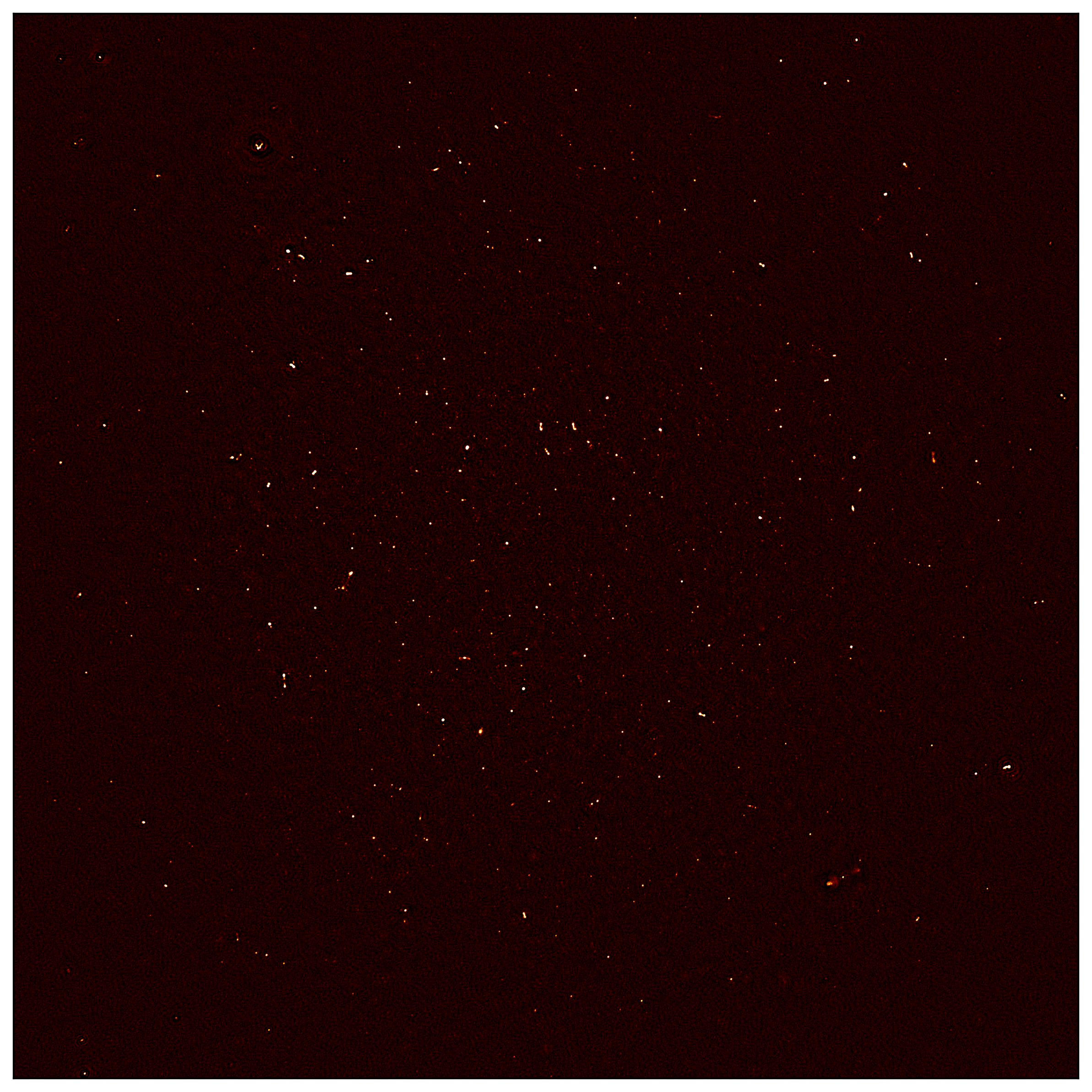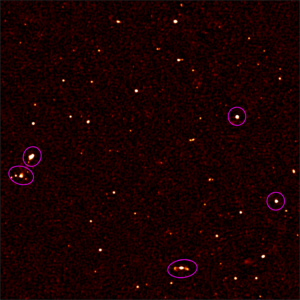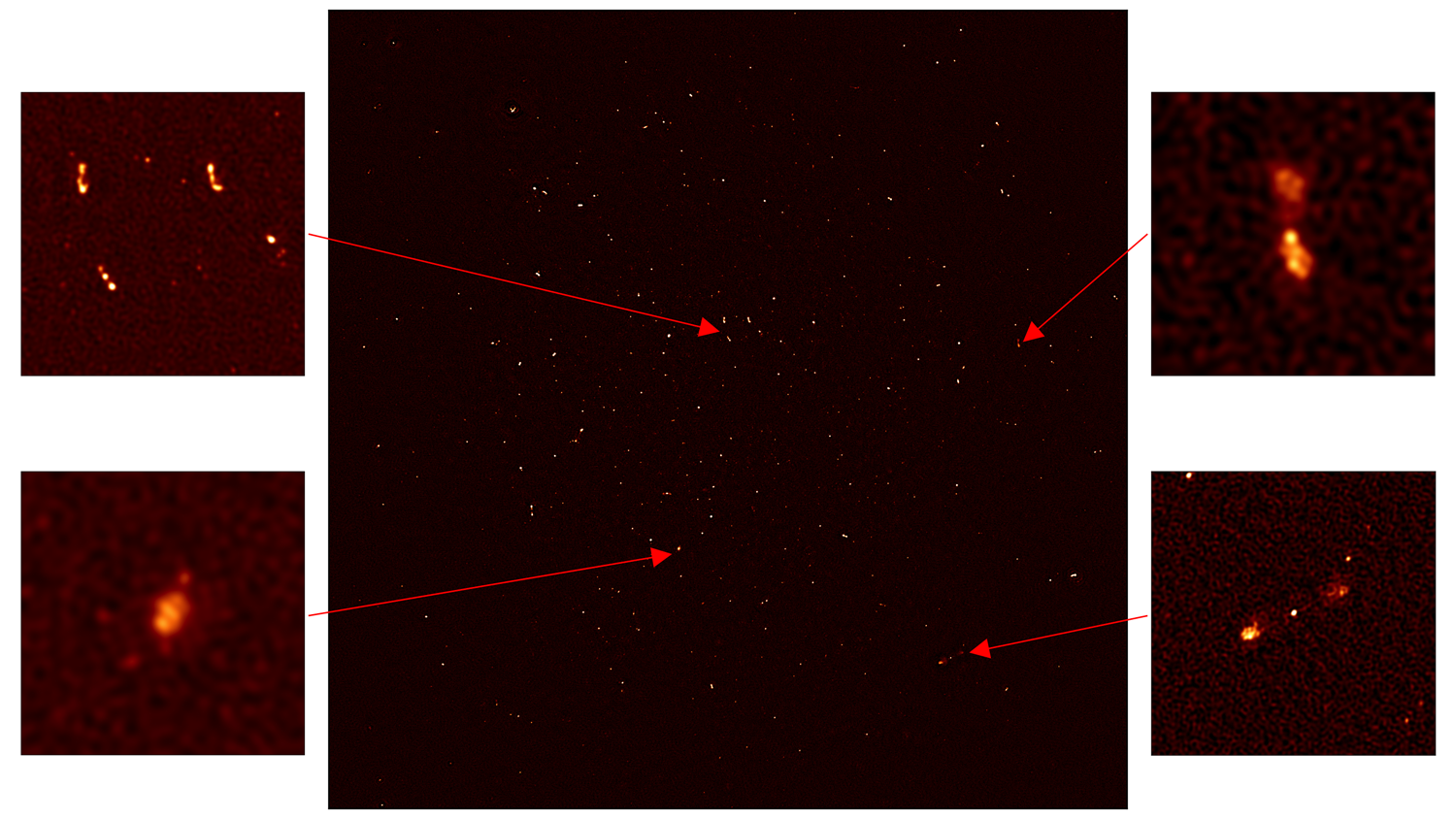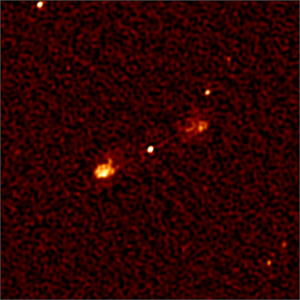MeerKAT Telescope Opens Its Eyes to Hundreds of New Galaxies

The first time the MeerKAT telescope turned its eyes to the sky, it saw more than 1,200 previously unknown galaxies.
Located in South Africa, MeerKAT announced its first galactic harvest on July 16. The first snapshot taken by the radio telescope shows more than 1,300 galaxies in a patch of universe where only 70 were previously known.
That's according to a statement from the Square Kilometer Array (SKA), a massive radio telescope network, which, if all goes according to plan, will be the largest radio telescope in the world, with 1 square kilometer (3,280 feet) of collecting area. [65 Amazing Galaxy Photos]

The impressive new image from MeerKAT captures less than 0.01 percent of the sky, and was taken using only one-fourth the number of radio dishes that will eventually make up the MeerKAT array. By 2017, 64 of MeerKAT's 13.5-meter diameter (44.3 feet) dish antennae are expected to be operating, the statement said. Only 16 are currently operating.
Early analysis of the first image has revealed that some of the galaxies spotted by MeerKAT clearly have supermassive black holes at their centers. The image captured at least one Fanaroff-Riley Class 2 (FR2) object, according to the statement, which is a massive black hole with gas and dust falling onto it. The black hole then spews some of the material back into space in the form of jets that emit radio waves. The particles in the jets move at close to the speed of light.

The SKA radio telescope network will use radio telescopes in South Africa and Australia to effectively create a single, large telescope with increased resolution and power. Currently, the largest radio telescope in the world is the Aricebo telescope in Puerto Rico, with a diameter of 305 meters (1,000 feet). Meanwhile, construction was just completed on the Five-hundred-meter Aperture Spherical Telescope (FAST) in China, which will have an observing diameter of nearly 500 meters (1,640 feet).

Radio telescopes are ideal for many astronomical purposes, including peering through clouds of gas and dust that can obscure other wavelengths of light. In addition, they are useful in the hunt and observation of pulsars and have been used in the search for communications signals from intelligent alien civilizations.
Get the Space.com Newsletter
Breaking space news, the latest updates on rocket launches, skywatching events and more!
The launch of MeerKAT and its first results are "a significant milestone for South Africa," Rob Adam, project director of SKA South Africa, said in the statement. "The South African team of more than 200 young scientists, engineers and technicians, in collaboration with industry, local and foreign universities and institutions, has developed the technologies and systems for MeerKAT."
Follow Calla Cofield @callacofield. Follow us @Spacedotcom, Facebook and Google+. Original article on Space.com.
Join our Space Forums to keep talking space on the latest missions, night sky and more! And if you have a news tip, correction or comment, let us know at: community@space.com.

Calla Cofield joined Space.com's crew in October 2014. She enjoys writing about black holes, exploding stars, ripples in space-time, science in comic books, and all the mysteries of the cosmos. Prior to joining Space.com Calla worked as a freelance writer, with her work appearing in APS News, Symmetry magazine, Scientific American, Nature News, Physics World, and others. From 2010 to 2014 she was a producer for The Physics Central Podcast. Previously, Calla worked at the American Museum of Natural History in New York City (hands down the best office building ever) and SLAC National Accelerator Laboratory in California. Calla studied physics at the University of Massachusetts, Amherst and is originally from Sandy, Utah. In 2018, Calla left Space.com to join NASA's Jet Propulsion Laboratory media team where she oversees astronomy, physics, exoplanets and the Cold Atom Lab mission. She has been underground at three of the largest particle accelerators in the world and would really like to know what the heck dark matter is. Contact Calla via: E-Mail – Twitter









